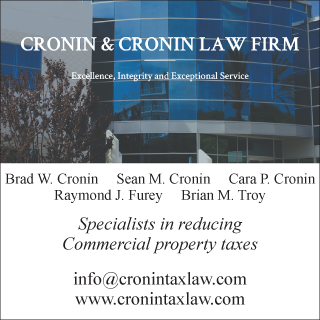News:
Long Island
Posted: August 11, 2014
Debt financed distributions and tracing interest: Deductibility of interest expenses under the new Act
Prior to the Tax Reform Act of 1986, deducting interest was much less complicated, as there were fewer limitations of such expenses. However, the new Tax Act made it increasingly difficult as to what constituted a valid interest expense.
Based on the new Act, any debt-financed distributions from pass-through entities required the partners to trace the use of the money received from such distributions in order to determine the deductibility of the interest expense. "A debt-financed distribution occurs when a partnership borrows funds and uses those funds to make distributions to its partners. The manner in which you report the interest expense associated with the distributed debt proceeds depends on your use of those proceeds." (IRS Publication 535) Each owner's share of the entity's interest expense is reported on Schedule K-1 and it is up to the specific partner to correctly report where this interest is deducted. However, if the company's operating expenses exceed the debt refinancing proceeds, then there is no interest to trace on this refinancing.
This interest expense could potentially fall into any of the following categories: Non-passive trade or business activity interest; Passive trade or business activity interest; Investment interest; and Personal interest.
Non-Passive Trade or
Business Activity Interest
One type of allowable interest expense is interest related to a non-passive (any activity in which the owner(s) materially participate in the operations of the business) trade or business activity. If funds from the debt-financed distribution were used to start a new business owned and operated by the partner that received the distribution, that interest would be considered non-passive trade or business activity interest.
Example: Tom, an owner of a rental property, refinances the mortgage on the property and, as part of the refinance he takes out a $50,000 cash debt-financed distribution. He uses this money to start a cleaning business as a sole proprietor. In this scenario, the related interest from the loan refinance would be treated as non-passive trade or business activity interest.
Therefore, the amount of interest expense passed-through from a flow-through entity to Tom would be reported on Tom's Schedule C, as 100% deductible.
Passive Trade or
Business Activity Interest
Similarly to non-passive activities, the proceeds from debt-financed distributions used in connection with a passive activity (activities in which the owner(s) do not materially participate in the operations of a business) can qualify as a valid interest deduction on an individual's personal income tax return as well.
Example: Karen receives $100,000 in debt-financed distributions from her investment in a real estate partnership. She then uses that money to pay expenses from a passive activity that she is also a partner in. The interest expense on those proceeds will be used to arrive at Karen's net income or loss from her passive activities on her Schedule E.
Investment Interest
A third way that proceeds from debt-financed distributions can be used such that the interest from the loan is considered a valid deduction is using the money for investment purposes. An investment purpose can be constituted as any type of asset that will produce investment income (interest, dividends, capital gains, etc.).
Example: A member of a rental real estate partnership receives a debt-financed distribution. He then uses this money to open a brokerage account and purchase various stocks. He can now deduct the interest expense on Schedule A of his Form 1040 since the stocks are considered investment assets.
However, the investment interest expense deduction is limited to a taxpayer's net investment income for any taxable year. Any disallowed interest expense is carried-forward into the next taxable year. One exception to this is that if tax-free bonds were purchased, then the interest expense would be non-deductible since the individual is not taxed on any income earned on such bonds.
Personal Interest
Personal interest is any interest that does not fall into the acceptable categories discussed above.
Take, for instance, example number 1: As opposed to using the money from a debt-financed distribution to open up his cleaning business, Tom instead used the money to purchase a car for his own personal use. The interest expense on this car is considered personal interest. Therefore, this would not be deductible on Tom's personal income tax return.
To conclude, the deductibility of interest expense is not as simple as it used to be. Making it even more difficult is the fact that the proceeds from debt-financed distributions need to be traced to their ultimate use in order to determine the deductibility of the interest.
John Lercara CPA is a supervisor at Janover LLC, Garden City, N.Y.
Tags:
Long Island
MORE FROM Long Island
Suffolk County IDA supports expansion of A&Z Pharmaceuticals
Hauppauge, NY The Suffolk County Industrial Development Agency (IDA) has granted preliminary approval of a financial incentive package that will assist a manufacturer in expanding its business by manufacturing more prescription (Rx) pharmaceuticals in addition to its existing over-the-counter

Columns and Thought Leadership

The evolving relationship of environmental consultants and the lending community - by Chuck Merritt
When Environmental Site Assessments (ESA) were first part of commercial real estate risk management, it was the lenders driving this requirement. When a borrower wanted a loan on a property, banks would utilize a list of “Approved Consultants” to order the report on both refinances and purchases.









.jpg)